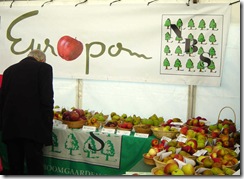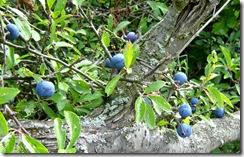Europom and an Apple, Ginger and Lemon Cake

I recently wandered along to the exhibition held as part of this year's Europom event – well, it was just down the road at RHS Wisley . Europom might sound vaguely Australian but actually it's a group of very laudable European organisations promoting the conservation of the widest possible range of fruit. Or as the posh lady who elbowed me out of the way to get to the front of the exhibit shouted to her even-posher friend “It's just a load of apples and pears!” (I left out the swear word). I think it's safe to say that the elbow lady was right - there were a load of apples and pears and after being suitably impressed and thankful that such collections exist I then started to feel guilty that I tend to use such a small variety of fruit in the kitchen. So for this recipe I got hold of some Byford Wonder apples from the fruit gardens at Wisley. I'm led to believe that Byford Wonder is a 19 th century Herefordshire variety of cooking apple and compared to the mor



